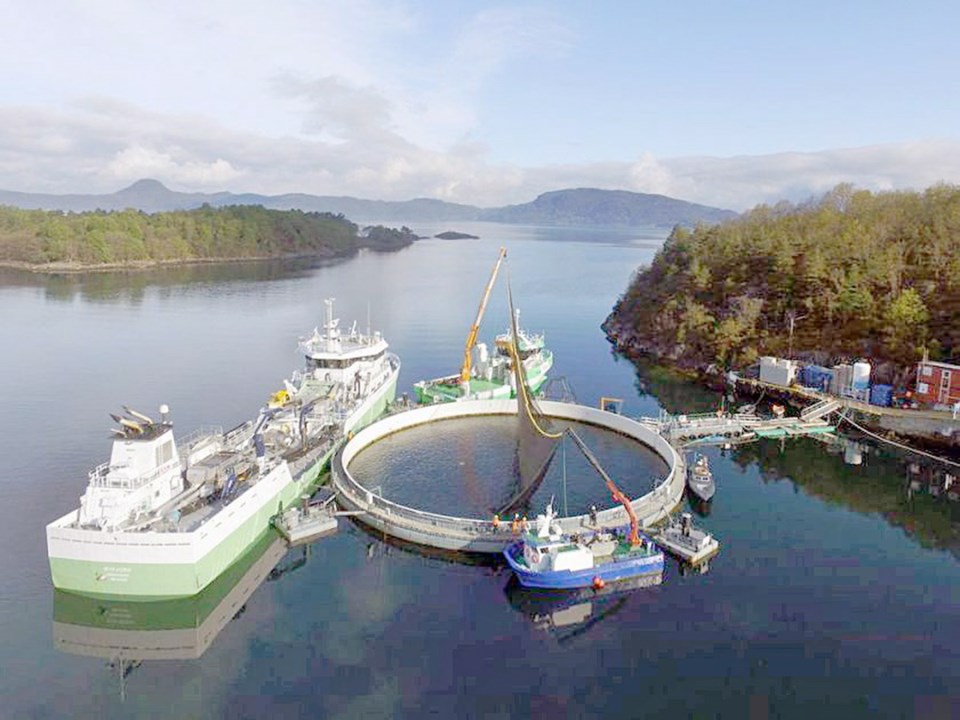Marine Harvest is proposing to build radical new salmon farms that could answer nagging concerns about sea lice infestations, virus transfer and escapes from conventional Atlantic salmon farms.
The farms will be built in Norway, and technology that proves useful can then be deployed in B.C. and around the world.
Ocean-based closed containment and semi-closed farms would avoid the massive energy requirements of land-based systems, with a goal of eliminating contact between farmed and wild salmon.
The company has applied to the Norwegian government for development licences that would allow them to build the new farms to full scale without the expense of a commercial farm license, said Ola Helge Hjetland, a spokesman for Marine Harvest Group.
The company will be rewarded with full licences for investing in new technology to fulfill the requirements of the program.
Its system is described as a closed, escape-proof farm that protects farmed fish from sea lice and pathogens. It has a semi-closed tank that extends 40 metres below the surface of the water.
The company has already built and stocked a third semi-closed tank with 200,000 fish, which has shown promising growth rates after design changes. The floating farm at Molnes pulls water in from the ocean from a depth of 26 metres, which is below the area where sea lice thrive.
“Most of the [research and development] we do is in Norway, where there is strong government support for it,” said Marine Harvest Canada spokesman Jeremy Dunn. “But any technology that proves itself sustainable and efficient, we would look at [in B.C.]”
Norway — with about the same amount of coastline as B.C. — plans to triple the output of its ocean-based aquaculture industry by 2050 to about five million tonnes annually, he said. “Our coastline offers us a huge advantage, and technology can help us utilize that marine environment,” he said. “When these technologies are proven to work, they are quickly deployed and adopted all over the world.”
In B.C., farmed salmon is the province’s biggest agricultural export at half a billion dollars a year. That is more than the next three biggest crops combined.
Environmental groups are pressuring the industry and government to move to land-based, closed-containment farms.
But land-based systems use 500 to 1,000 times more energy to move water, warm, cool and regulate oxygen and carbon dioxide levels, said Tony Farrell, chair in sustainable aquaculture at the UBC Centre for Aquaculture and Environmental Research.
“That energy cost has to be added to the price of the fish, so it is less affordable,” he said.
B.C.’s experimental land-based salmon farm, Kuterra, typically sells Atlantic salmon for a 30-per-cent premium over ocean-raised fish and breaks even. Its operators are seeking investment partners for an expansion they believe could make the operation profitable.
The UN believes aquaculture will be at the core of feeding the world’s growing population.
Aquaculture has overtaken wild fisheries as the world’s main source of seafood, providing 53 per cent of all the fish consumed by humans as food, according to the United Nations Food and Agricultural Association. “The questions we face now are what form aquaculture will take, how much will it grow, and where will it grow?” said Farrell.



